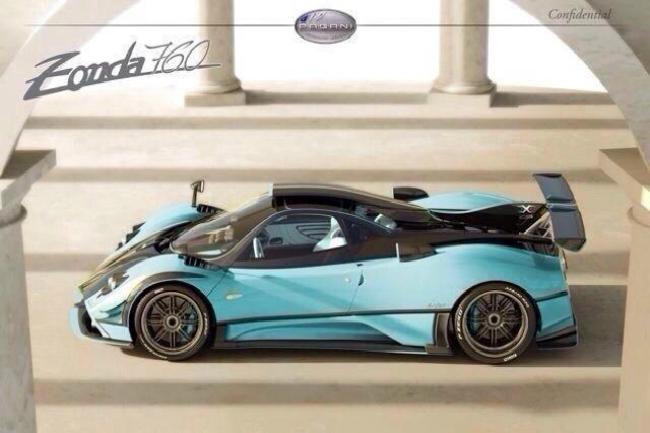
The Pagani Zonda is like the murderer in a horror movie; it just won’t stay dead. I don’t know how many times Pagani has said it is going to stop making the venerable Zonda and switch over to producing Huayras. But it’s never seemed to be able to stick with it. That’s OK, though. Much like Heath Ledger, we just can’t quit them … Because the Zonda is awesome.
Apparently the small Italian supercar maker is still producing special custom Zondas for VIP customers. In this context, I believe VIP means a net worth bigger than that of a hedge fund run by Bruce Wayne and Tony Stark.
The special Zonda in question has been dubbed the 760 X. It is a baby blue and carbon fiber black model, which appears to be similar to the Zonda UNO and 760LM editions. The 760 means that this Zonda will have ALL the horsepower – 760 to be precise. The news comes from Prototype Zero, a Pagani fan blog that seems to have inside connections at the factory.

The blog owner speculates that this special Zonda might be destined for the Gulf country of Qatar, because the blue color is apparently the color of the Qatari royal family. Otherwise, the car’s likely destination is China, an increasingly popular endpoint for supercars.
Regardless of where it winds up, it’s good to know that our old friend the Zonda is still alive and kicking, at least if you have some measurable percentage of the entire world’s money supply to throw around. So kudos Qatari or Chinese billionaire, you have good taste.


